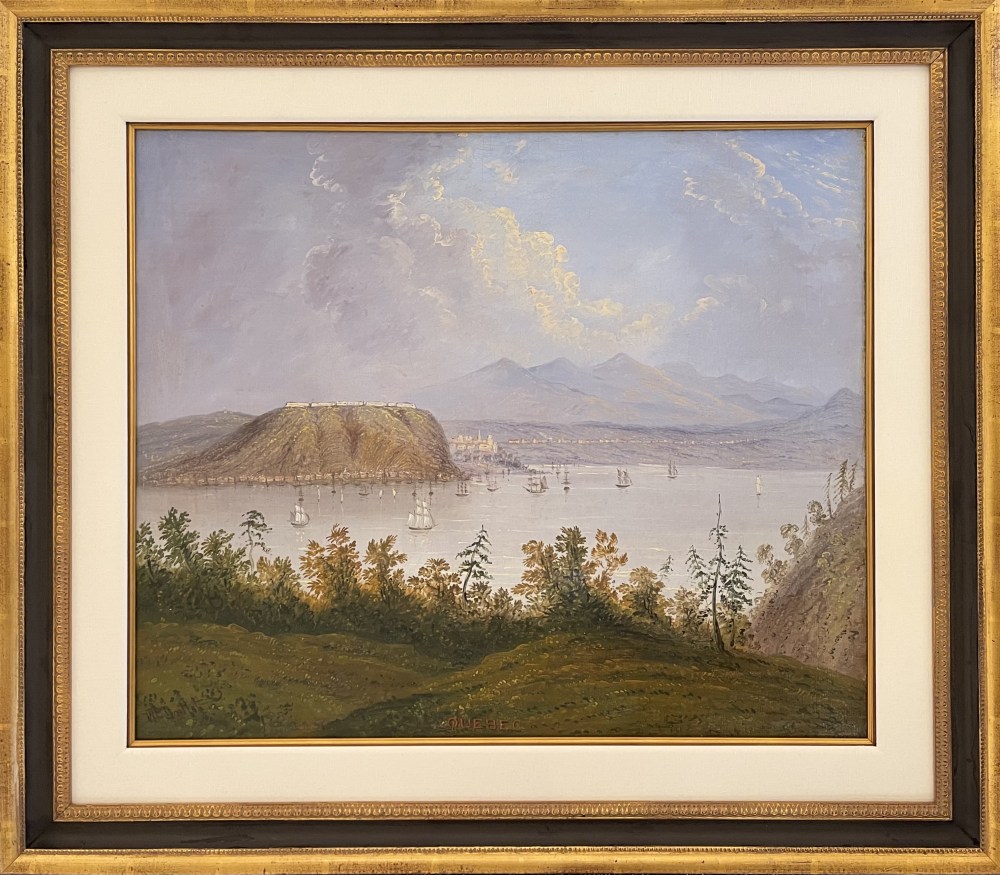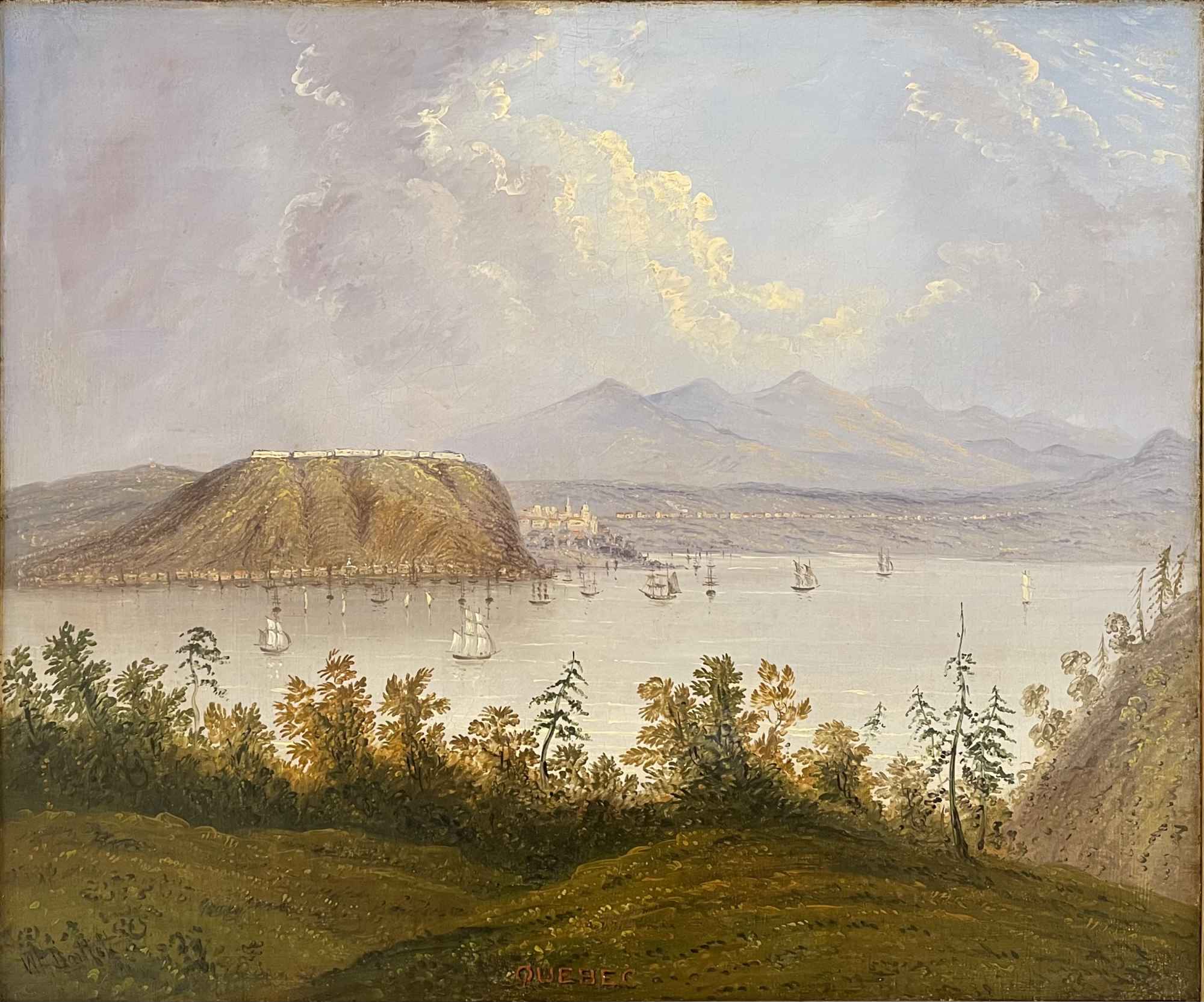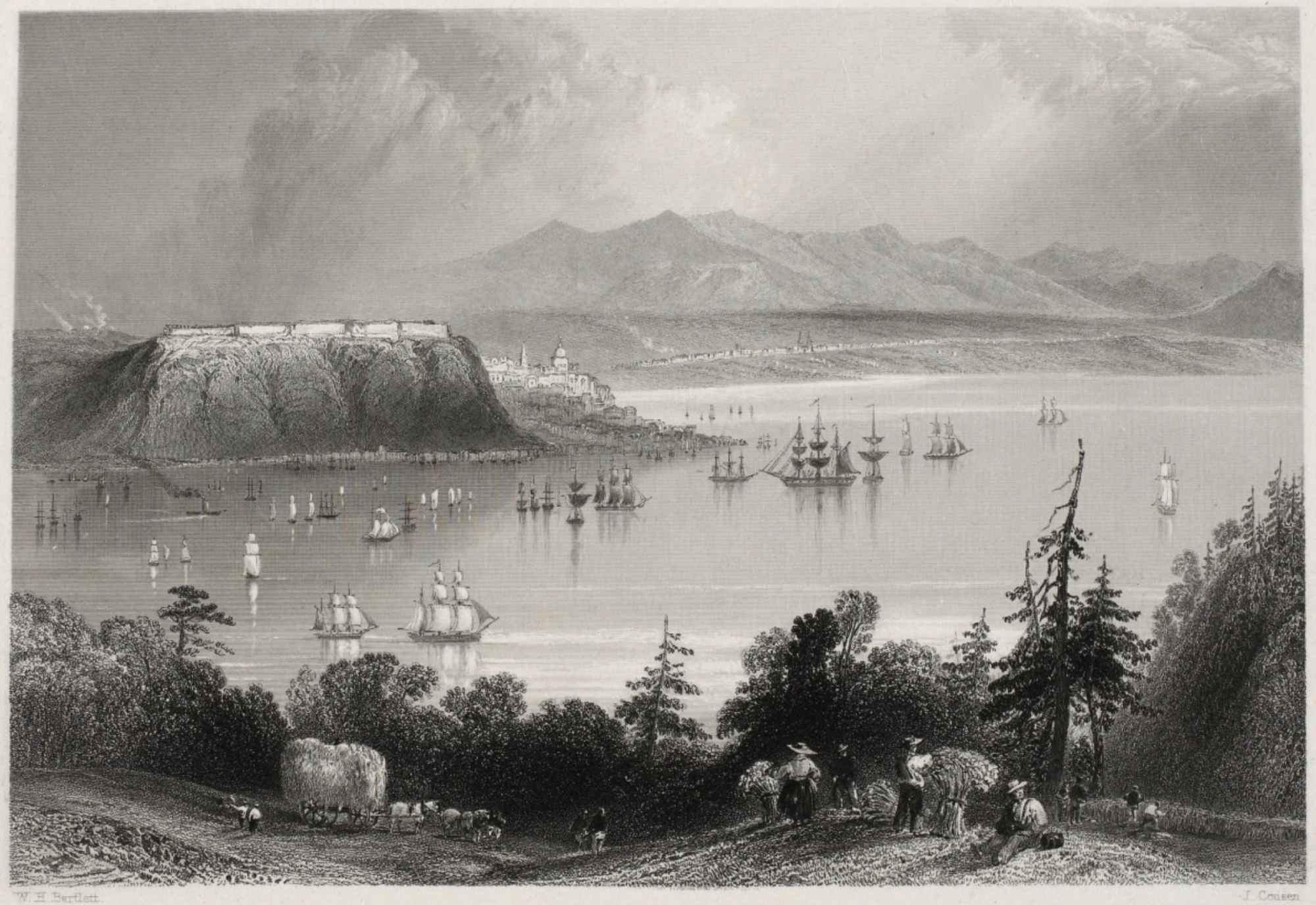Ventes notoires
Quebec, 1838 (circa)
52.1 x 62.2 cm
Inscriptions
signed 'W.H. Bartlett' (lower left); titled, 'QUEBEC' (lower middle).Provenance
Collection of Senator Michael Pitfield.
Dr. and Mrs. Joe MacInnis, Toronto.
Documentation
Janice Tyrwhitt and Henry C. Campbell, Bartlett’s Canada: A Pre-Confederation Journey (McLelland and Stewart Limited: Toronto, 1968), pp. 12, 16, 19, 22;
Nathaniel Parker Willis, ESQ., Canadian Scenery Illustrated (London: George Virtue, 1842), cover and p.49, print illustrated.Their publication found immediate success and influence and were widely copied by numerous artists in various media. However, since George Virtue’s book production accounts have not been found, much confusion arises as to whether sketches attributed to Bartlett are actually his, or copies after Bartlett engravings, or preparatory drawings by intermediary artists for the numerous engravers employed by Virtue.
There is evidence that printmakers engaged by publishers preferred to work more efficiently from model-sketches in monochrome, rather than in colours, and in a small scale similar to a book format. The series of Bartlett sketches related to his Canadian prints preserved in several Canadian public collections are consistent with those criteria. They also reveal the artist’s working method of sketching with a pencil, pen and brush and sepia wash, with very slight traces of colour. Furthermore such working sketches were usually not signed, and were returned to the artist after use by a publisher.
This painting of Quebec from the opposite shore of the St. Lawrence relates to plate 10, which appeared between pages 48-49 of Canadian Scenery, vol.1, but is never referred to in the text. The original sepia sketch does not seem to have survived, although other related sketches are held at the National Gallery of Canada and Library and Archives Canada. Bartlett’s view is taken from the south shore of the St. Lawrence, west of the village of Levis, but both the print and the painting exaggerate the height of the Citadel, the steepness and extent of the cliffs below, and the height of the distant Laurentian hills. A watercolour by the American artist Washington Friend seems to have been taken from exactly the same vantage point.
As with the painting of Halifax, the foreground figures in the print have been omitted from the painting, topographical features have been simplified, and the number of ships on the river has also been reduced. The work has also been heightened to include a magnificent depiction of clouds and sky. This painting reflects the incredible attractiveness of Bartlett’s sketches, which demonstrate both his “innate romanticism” and his “fondness for scenes abounding in historic associations”. Such depictions were often copied, pirated, and used as the basis for work in other media, including paintings.
Jim Burant
—
Jim Burant, a member of the Algonquins of Pikwàkanagàn First Nation, earned his Masters in Canadian Studies specializing in Art History (1979) from Carleton University. He worked at Library and Archives Canada in various capacities, including the management of the art and photography archives, from 1972 until his retirement in April 2011. He has published and lectured widely on aspects of art, photography, and archives in Canada and abroad; has curated many exhibitions; and has an international reputation in the fields of art history and archives. He received the Queen’s Golden Jubilee Medal for his services to Canada in 2003.















